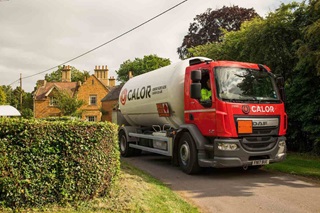We can’t achieve net zero without tackling the way we heat our buildings. And while it’s clear heat pumps, hybrid heat pumps, renewable gases (including BioLPG and rDME), heat networks, hydrogen, and wood pellets all have roles to play, their relative roles are hotly debated. It’s also clear we’re not making progress nearly fast enough, so what can be done to get heat moving?
Heat pumps are a major focus of government policy, but upfront cost remains a barrier to uptake. Even after the £5,000 Boiler Upgrade Scheme grant the customer still has to pay around £3-4,000 for a 7kW heat pump install, more than a typical gas boiler.
But what if your home isn’t suitable for a 7kW install, such as many living in rural areas, where homes are older and less energy efficient? Many rural homes will need a larger 10kW heat pump (or even larger) taking the cost of the average heat pump install in a rural, off gas grid home to £12,000, according to government. Even with the £5,000 grant, heat pumps in rural homes are likely to remain the preserve of the affluent who have £7,000 of their own money to top up the grant.
Yet government seems intent to push ahead with rural homes first, and in October last year it consulted on banning the replacement of fossil fuel boilers in off gas grid homes (nearly all in rural areas) from 2026, and 2024 for larger businesses. If the proposals become law, most rural households would be banned from fitting anything other than a heat pump after 2026. Without any government support, this policy alone would increase the number of households who are ‘just managing’ by 25% (just managing defined as more than 10% of household income after housing costs spend on fuel, and total household income £26k-£43k). This feels unfair and the wrong policy in the midst of a cost of living crisis.
Wouldn’t it be better to initially target heat pumps at the types of homes that are best set up to get a heat pump immediately – both in urban and rural areas – rather than just rural homes? This is Octopus Energy’s current approach whose initial focus is ‘generally…homes below 200 square meters from the 1930s onwards’ before it starts on ‘homes with more specialised needs’. Installs in heat pump ready homes will be cheaper, less disruptive for households and more likely to create early positive experiences, which is vital for heat pumps to gain support from the public. The government’s proposed ‘rural first’ approach is precisely the opposite.
The alternatives must be viable and affordable, particularly for the homes going first. This includes continuing efforts to bring heat pump costs down, but also solutions for those homes unsuitable for heat pumps, hydrogen or heat networks. Biomass is the only option for these homes; however current policy only supports woody biomass and must be expanded to include renewable gases such as BioLPG and rDME. BioLPG is already available and major investment is in place to expand rDME and credible pathways for 100% domestic production have been demonstrated. Focussing on properties which are best set up for a heat pump immediately and enabling others to use alternatives is a fairer and more efficient way to get the right solution to the right house.

 }
}
 }
}
 }
}
 }
}
 }
}
 }
}
 }
}
 }
}